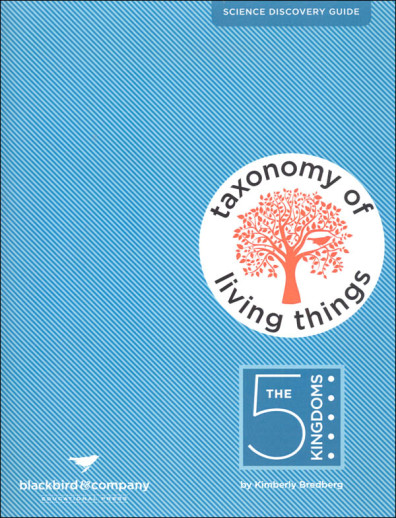We use cookies to make your experience better. To comply with the new e-Privacy directive, we need to ask for your consent to set the cookies. Learn more.
Taxonomy of Living Things Journal: Animalia (Science Discovery Guide)
Everything is either living or non-living, and this 8-week study will introduce your student to the systematic way to sort, identify, name and classify all the things on this earth that are alive. Two books are required for use with this study guide: Classifying Living Things and Tree of Life: The Incredible Biodiversity of Life on Earth. Students will go through these books chapter-by-chapter and discover the world of living things. Along with these books students will need a pen or pencil, eraser, and colored pencils. Students do the assigned reading and complete the written exercises. Sections 1-3 teach the general information for classifying and sections 4-8 cover each of the five kingdoms.
The first week students will use Classifying Living Things and begin Tree of Life in the second week. In week one, students do the reading and answer questions. Week two, students read, answer questions, and do a research project on Carolus Linnaeus and write a paragraph about their findings. Week 3 is reading and questions again. Weeks 4 through 8 follow the same format - read and answer questions, choose a single species from the kingdom being studied and classify it, use colored pencils to draw your chosen subject, and write a paragraph describing your subject. There are blank pages at the back of the guide for writing notes. This study is very easy to use, and students will have a good introductory understanding of taxonomy - the classification of living things.
Explore the amazing order found in the world of living things!
All living things can be ordered according to their common biology. Classification allows scientists to explore levels of similarity, dissimilarity, and interconnectedness of cells, systems, and structures. The first level of classification is the Kingdoms. There are five: Protista, Monera, Fungi, Plantae, and Animalia. Over the course of a year, as students explore the diversity of the animal kingdom, they will gather knowledge that will connect to many corners of the field of biology.
| Product Format: | Paperback |
|---|---|
| Brand: | Blackbird & Company |
| Grades: | 6-9 |
| ISBN: | 9781937200831 |
| Length in Inches: | 11 |
| Width in Inches: | 8.5 |
| Height in Inches: | 0.1875 |
| Weight in Pounds: | 0.4 |

